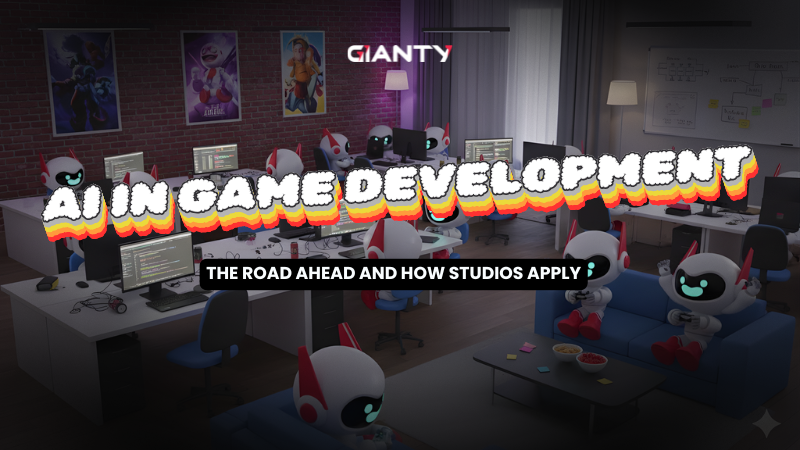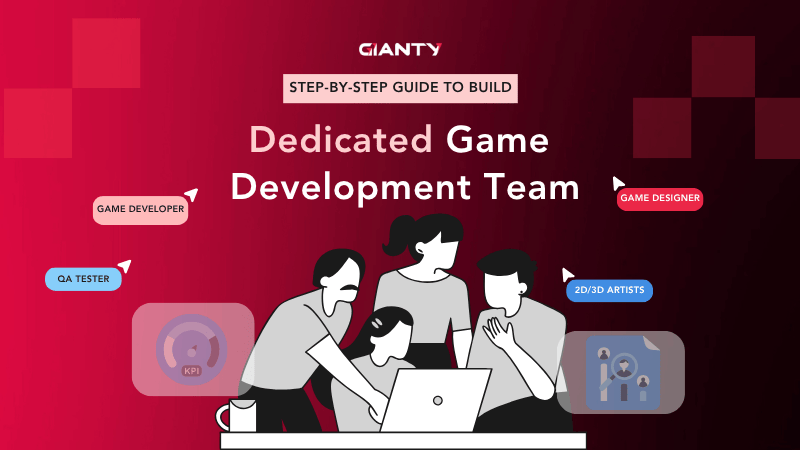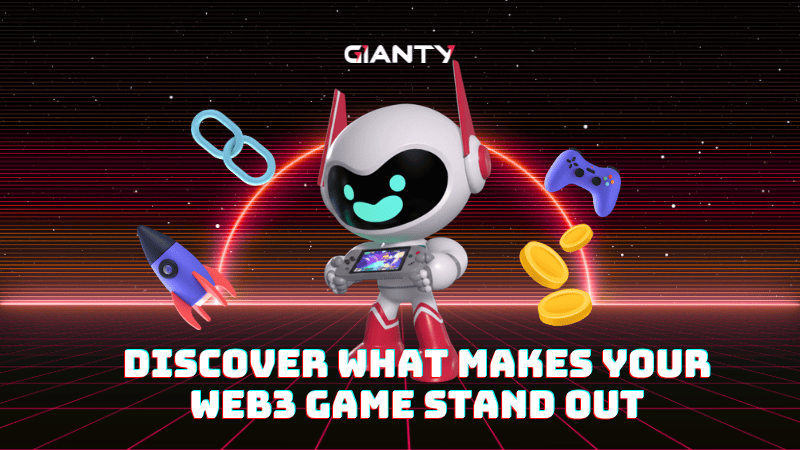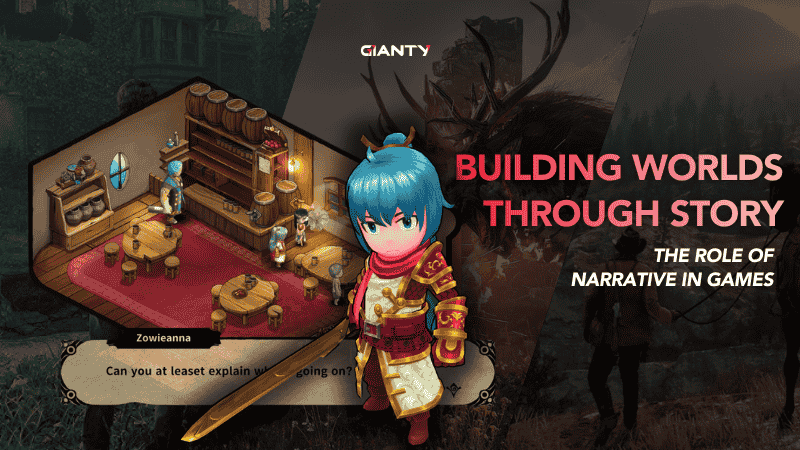Game Industry trends come and go, often driven by technological leaps, shifting player expectations, or sudden cultural moments. What’s hot one year might feel outdated the next – but some trends show signs of lasting impact.
Events like the Game Developers Conference provide a snapshot of where things are heading. And this year, one thing became undeniable: the future of games isn’t on the horizon – it’s already reshaping pipelines, platforms, and player experiences.
5 Trends are taking the world by storm – Generative AI, XR, Live Service, Mobile, and Accessibility. Each is reshaping how games are built, monetized, and experienced.
This article breaks down the biggest game industry trends and how studios like GIANTY are helping game teams adapt to the future – now.
Want to Build Your Next Hit?
Struggling to keep your MVP lean, functional, and investor-ready?
An Ultimate Game MVP Checklist by GIANTY gives you a clear framework to cut scope creep, avoid costly mistakes, and focus on what truly matters.
Download it now to build smarter, pitch stronger, and launch faster.
When your game project demands speed, stability, and scalability, you need a partner who can deliver. With expertise in Unity development, GIANTY is ready to help you build the next success story. Contact us today and let’s bring your vision to life.
Smarter, Faster, Riskier: GenAI’s Big Leap
Generative AI emerged not as a future disruptor but as a present-day production tool. Remaining a heatedly debated topic amongst many, whether on conference panels, or social media threads.
One-third of developers are already using generative AI in their workflows. The focus this year: speeding up content pipelines, reducing costs, and enabling personalization at scale.
![Claude “bring[s] us closer to a future where AI enriches and expands what humans can achieve.” – Source: anthropic.com](https://www.gianty.com/wp-content/uploads/2025/07/Game-Industry-Trends-1.jpg)
It’s changing so fast, it’s gonna be obsolete by the time the conference is over.
Breakthroughs from Anthropic (Claude 3.7), NVIDIA (RTX Kit), and Microsoft (WHAM) point toward AI at runtime – AI systems that respond to player behavior in real time.

Personalization is also getting a lot of traction nowadays, from Xbox’s CoPilot-generated recaps to emotion-aware NPCs and customizable content in titles like Suck Up! and 1001 Nights.
While promising, this raised ethical concerns around privacy, job loss in narrative roles, and potential misuse in monetization, making it one of the most controversial game industry trends.
Where It’s Applied:
- Genres: Narrative games, RPGs, simulation, sandbox
- Platforms: Console, PC, VR, mobile
- Production workflows: Rapid prototyping, NPC dialog systems, level art, localization
- Business models: Personalized content delivery, scalable live ops support
Companies like GIANTY continue to invest in AI infrastructure and system development, with applications across industries – including gaming. That way game studios can leverage for faster development, smarter systems, and more responsive player experiences.
Still, at GIANTY, we see generative AI not as a replacement for creativity, but as a tool to accelerate iteration while keeping human-driven design at the core.
VR Finds New Life in Casual and Social Spaces
Virtual reality development has faced stagnation in recent years, with only 16% of developers currently working on VR or AR games, per the State of the Game Industry Report.
However, it showed renewed momentum as Meta reported a 30% increase in time spent in VR, largely driven by newer player groups attracted by more affordable headsets like the Quest 3S, which favor midcore and casual multiplayer free-to-play games
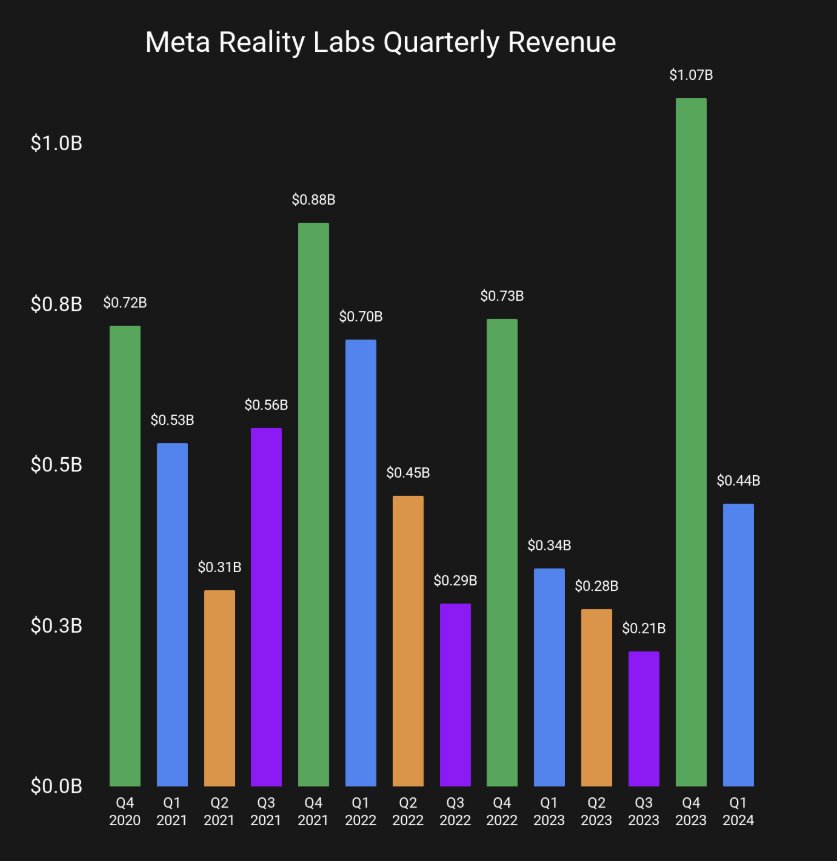
Developers like Schell Games emphasize onboarding newcomers by blending tutorials into fun minigames, addressing the core challenge of designing social VR spaces for audiences with varied experience levels.
We are not going to be successful as a VR platform if we constrain ourselves to a single audience.
Immersive AR experiences were another highlight, with Niantic’s AI-powered Morpheus tool and Snapchat’s Lens Studio enabling richer, interactive real-world overlays.
And spatial audio emerged as a crucial innovation, with tools like Acoustic Ray Tracing enhancing immersion in AAA titles such as Batman: Arkham Shadow.
Indie developers find creative solutions balancing sound quality and mobile VR constraints, sometimes mixing 3D spatial and 2D audio to optimize clarity.
Where It’s Applied:
- Genres: Midcore multiplayer, casual games, social VR, AR experiences
- Platforms: VR headsets (Meta Quest, PC VR), mobile AR, MR devices
- Production workflows: Player onboarding, spatial audio design, AI-powered environment generation
- Business models: Free-to-play multiplayer, immersive AR apps, social spaces
As immersive technologies advance, companies that know how to work with devices like the AVP, can develop XR solutions that help studios accelerate prototyping, optimize player experiences, and deliver more immersive, friction-free virtual worlds.
Rebuilding Live Service Games for Retention, Not Reach
Live service games were once seen as the industry’s golden ticket big-budget titles like Redfall, Concord, and Blue Protocol failed to sustain momentum, prompting some studios to shut down entire teams. Others, like MultiVersus, faced a shutdown before a later relaunch.
Still, it is suggested that the model isn’t broken – just bloated.
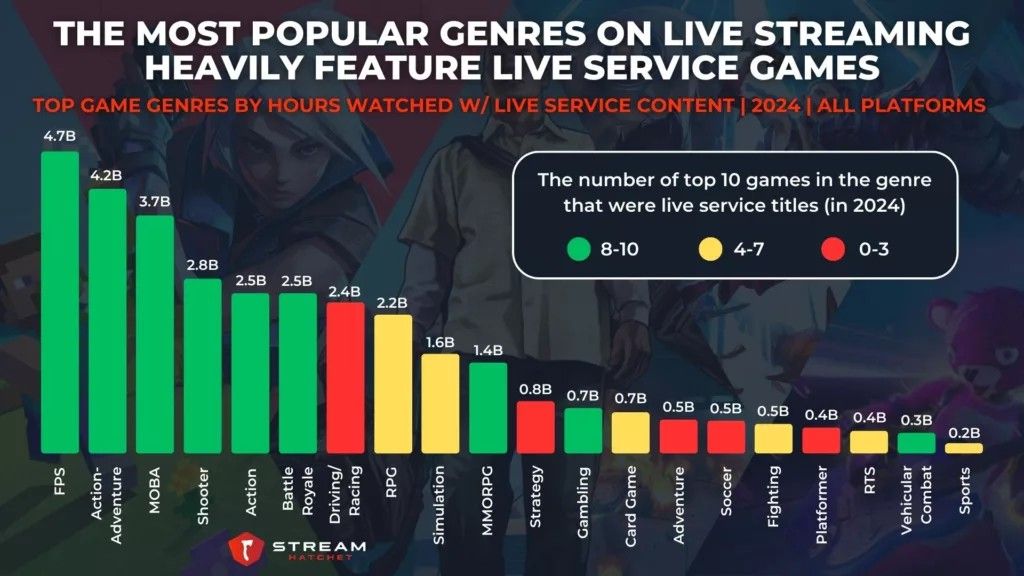
Instead of chasing mass audiences with AAA-scale budgets, teams are encouraged to create niche live service games – priced at $20–$40 – designed for focused communities rather than the general market.
These smaller-scale live games are cheaper to maintain and can deliver stronger player retention through tight feedback loops and sustainable updates.
Other speakers recommended borrowing ideas from World of Warcraft’s layered release cycles and Elder Scrolls Online’s player-type balancing, while leveraging telemetry tools to personalize in-game economies.
It was emphasized this strategy can boost both engagement and purchases if it’s handled with care – a game industry trend that could go miles in the right hands.
Where It’s Applied:
- Genres: Strategy, shooters, social MMOs, RPGs
- Platforms: PC, console, mobile
- Production workflows: LiveOps, telemetry-based UX design, behavioral segmentation
- Business models: F2P, seasonal content, battle passes, hybrid monetization
Despite the failures, success in live service is far from impossible. Somewhat older titles like Valorant, Genshin Impact, and League of Legends show that with the right mix of content cadence, community focus, and platform support, live service games can thrive.
For game developers, the challenge ahead is less about chasing scale – and more about building systems that players want to return to, again and again.
Making [live service] games is like developing rides for a theme park constantly that stays open all year round. And you have to come up with more rides and more rides, and the park never closes. And it has to be fun, all the time, forever.
The World Plays Mobile – Developers Are Catching Up
Mobile development is back on the rise. Growth is still steady – even if slower than in the previous decade – and developers are adjusting strategies to meet changing player habits, global access, and platform economics.
Much of the renewed momentum is coming from emerging markets, where smartphone adoption is soaring. GDC speakers highlighted that in some countries, over 90% of users play games primarily on mobile, making it one of the most-watched game industry trends.
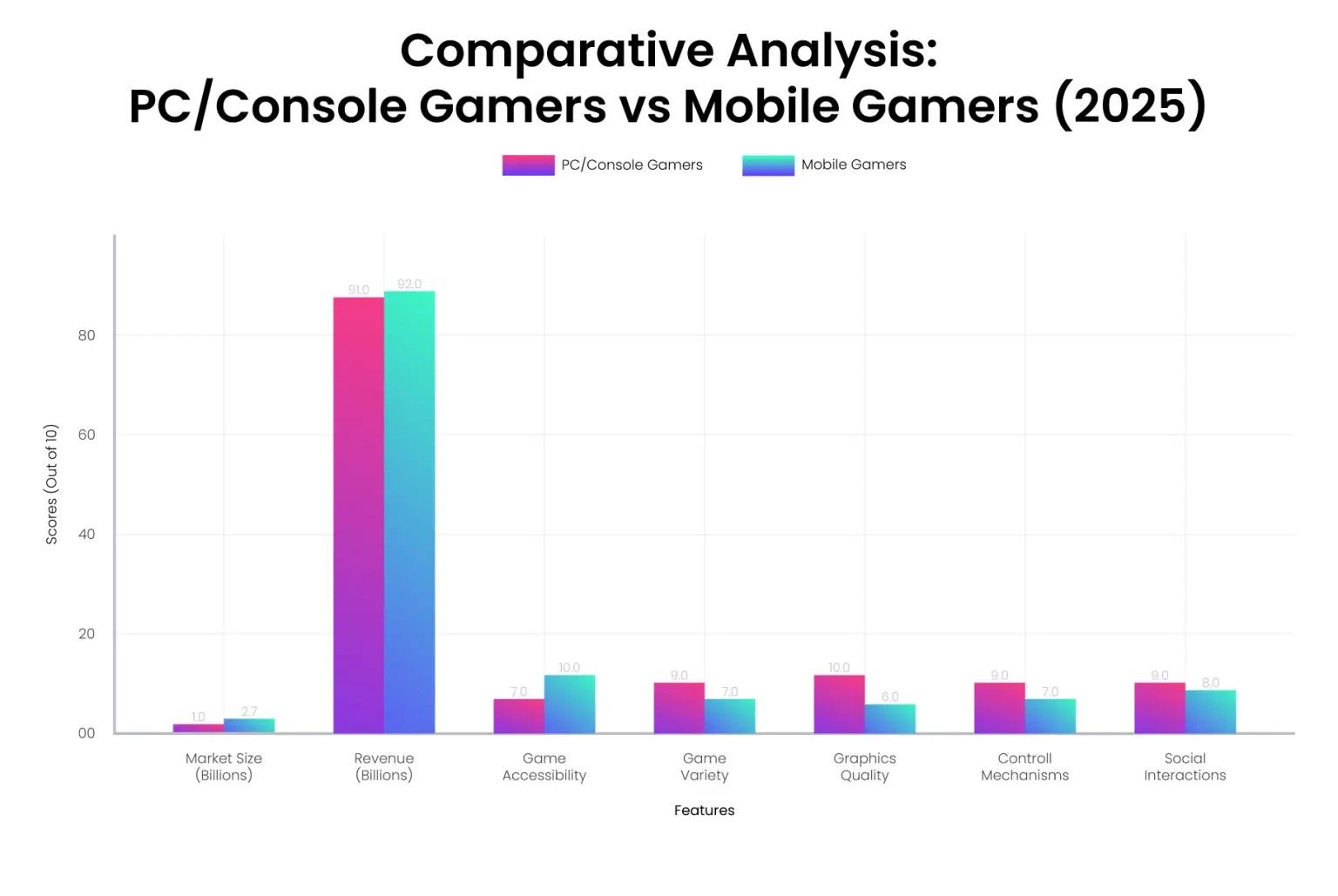
Developers are responding with hybrid-casual titles that mix mass appeal with richer gameplay. Games like Capybara Go! were spotlighted at GDC 2025 as a model of mobile-first metagame design.
HTML5/browser-based mobile games also saw renewed attention this year, as tools like WebGL and the limited but still promising WebGPU make web deployment faster and more visually engaging.
Meanwhile, ad strategies are becoming more narrative-driven, with companies like Metacore embodying this new shift in game industry trends by reshaping game stories based on ad performance.
Where It’s Applied
- Genres: Puzzle, idle, merge, hybrid-casual
- Platforms: iOS, Android, web browsers
- Production workflows: Cross-platform builds, rapid A/B testing, localized UX
- Business models: Free-to-play, ad-supported, narrative-driven user acquisition
Companies including GIANTY can get ahead and bring added momentum to this shift through mobile game development and platform adaptation services.
Especially if they specialize in supporting studios in delivering polished gameplay experiences across devices and regions, mobile localization, or scalable 2D/3D art for live service games.
Accessibility As A New Standard
Accessibility is a growing priority in gaming, as about 16% of the global population has disabilities and 15–20% show signs of neurodivergence. At GDC 2025, developers shared innovations like a customizable UI for players with visibility challenges.
Experts highlighted the importance of integrating accessibility across all departments, from programming to marketing, and involving players with disabilities in testing to ensure research pipelines are truly accessible.
Those of us who are in a position to make the world more accessible should work together to do just that.
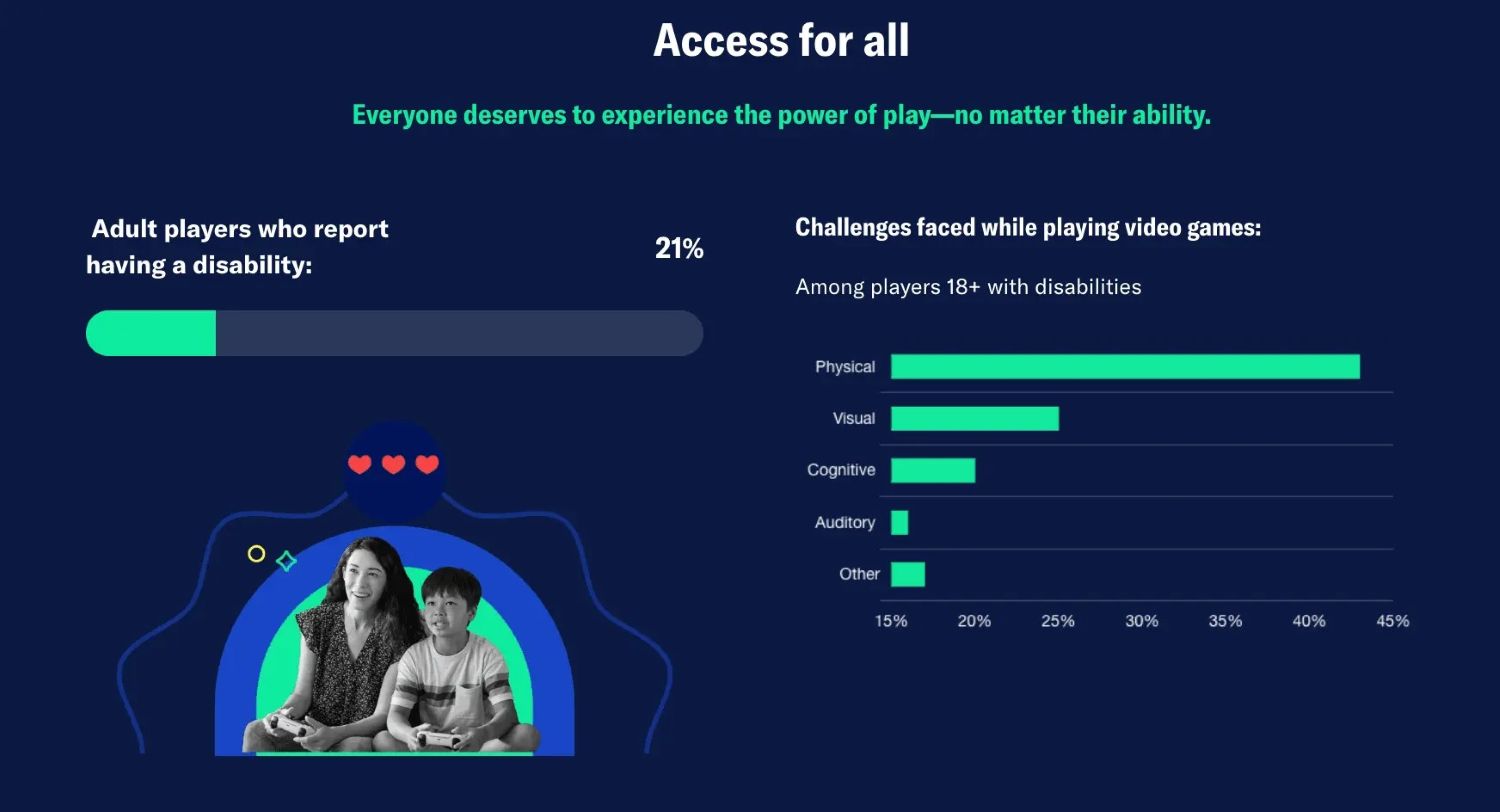
The Entertainment Software Association launched the Accessible Games Initiative, a collaborative effort by major companies to standardize accessibility feature tags.
These tags help players quickly identify games that meet their needs, replacing the guesswork of trial and error.
Meanwhile, in South Korea, Smilegate is tackling social stigma by embedding accessibility education into university curricula and creating training programs to bring more disabled professionals into the industry.
AI is also emerging as a powerful accessibility tool, offering real-time assistance and content creation support. However, it poses risks like misinformation and bias, requiring development teams to rigorously test AI systems for accessibility and empathy.
Where It’s Applied:
- Genres: VR, narrative-driven, multiplayer, competitive
- Platforms: PC, console, VR
- Production workflows: Cross-department collaboration, inclusive testing, adaptive UI development
- Business models: Premium with accessibility add-ons, episodic content with customizable features, subscription with ongoing accessibility updates
As the player base becomes increasingly varied, inclusive design ensures everyone can participate, enjoy, and feel represented. Beyond ethics, accessibility drives innovation, expands market reach, and fosters loyalty among players who might otherwise be excluded.
Embracing accessibility from the start isn’t just good practice or some game industry trend that passes with time but essential for the future success and relevance of the gaming industry.
Seizing Opportunity Through Game Industry Trends
One thing is crystal clear: the game industry is no longer waiting for the future to arrive – it is actively shaping it through game industry trends like these.
For developers and studios willing to rethink traditional approaches – to experiment boldly, adapt workflows fluidly, and place player needs at the front – this moment is ripe with potential.
The companies leading the charge, like GIANTY and others investing deeply in scalable AI, immersive tech, and inclusive design, are setting new standards that will define how games are made, experienced, and monetized for years to come.
The future of gaming is no longer a distant vision; it’s happening now.
And as the industry continues to navigate this dynamic landscape of constantly changing game industry trends, success will belong to those who see disruption not as a threat, but as a chance to innovate smarter, faster, and with greater empathy for the players they serve.
Want to explore how GIANTY can support your studio’s next step in AI, mobile, or scalable art production? Let’s talk! Contact us or view our latest case studies!





